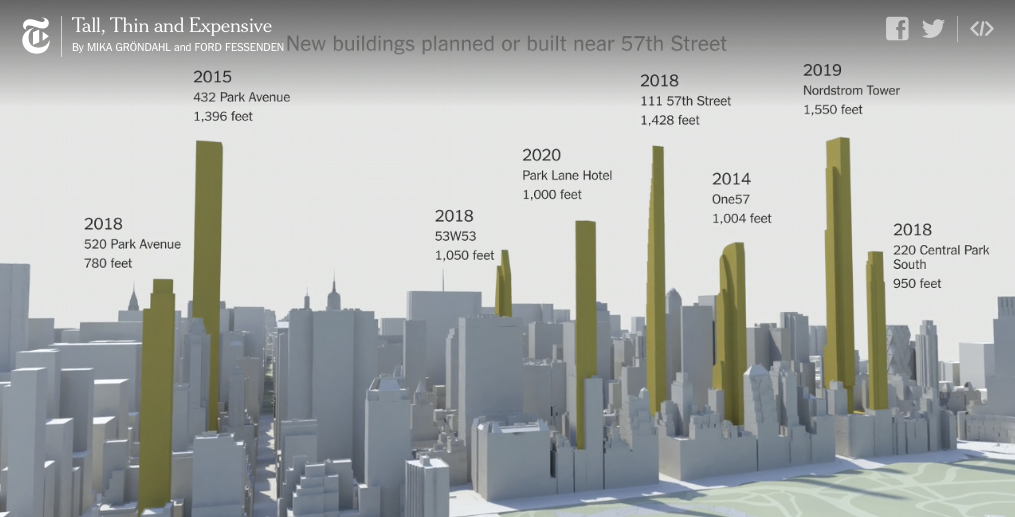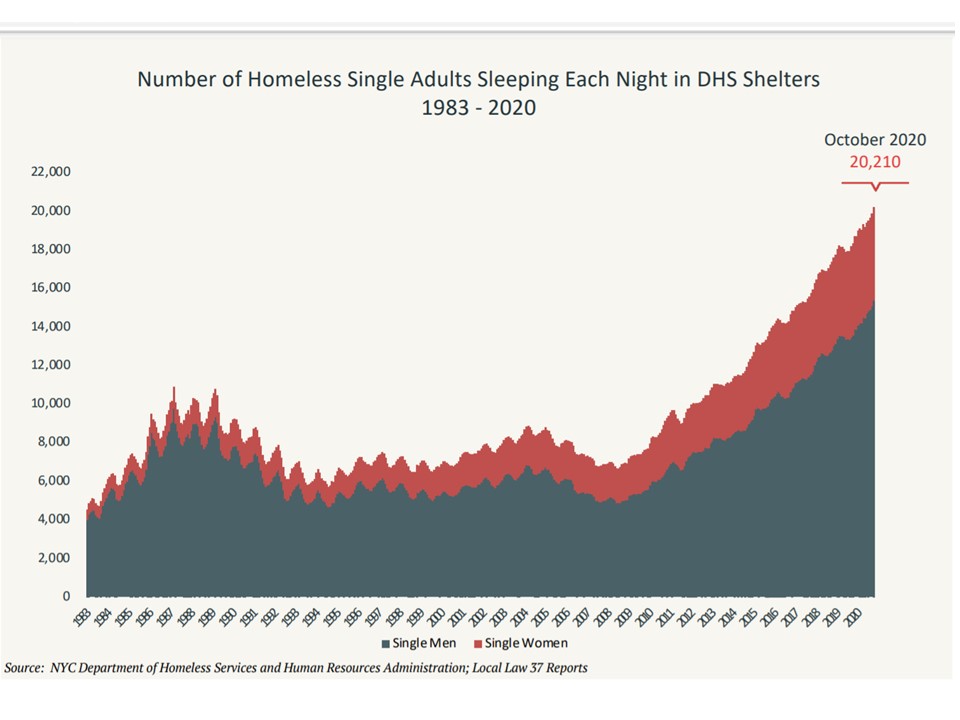/cdn.vox-cdn.com/uploads/chorus_image/image/65752954/190522_18_33_12_DSC09249__1_.0.jpg)
Over the past decade, New York City’s iconic skyline has undergone a massive transformation, with new developments popping up all across Manhattan. Although there are new real estate projects throughout the entire city, one street in particular has seen exceptional amounts investment in the past couple of years; 57th Street, Manhattan, on the southern edge of Central Park (also known as “Billionaire’s Row”) is now home to some of the thinnest, tallest, and most expensive properties in the world. Although some embrace the new buildings as symbols of prosperity in the twenty-first century, others characterize them as signs of excess in an increasingly stratified city.
The Good

As shown in the graphic above, Billionaire’s Row is comprised of eight luxury towers built in the past ten years (7 of which were built in the past five). Together, these eight buildings hold a plethora of records between them. For example, standing at 1550 feet, Central Park (Nordstrom) Tower is the tallest residential building in the world. Meanwhile, Steinway Tower (111 57th) holds the title of the skinniest building in the world, with a height-to-width ratio of 24:1 (in comparison, the Empire State has a height-to-width ratio of 1:2.95). And collectively, the buildings made Central Park South the most expensive street in NYC in 2019, with a median price of $9.7 million, and an average sale price of $22.452 million (a figure that has only gone up since). 
Whether the buildings are really worth this much or have any practical value is debatable. But they are undeniably cool. As mentioned above, these skyscrapers are incredibly thin. Thanks to advancements in construction techniques and clever tricks , these buildings are not only feasible to build, but inhabitable. One of these tricks is shown above, in the image of 432 Park Avenue. If you look closely at the center of the frame, you will notice that two floors have no apartments or windows inside of them; they are completely empty. Instead, these floors contain structural equipment inside of them, while the lack of windows allows wind to pass through, reducing the swaying the building (and its residents) experiences. In fact, 25% of the floors on 432 Park Avenue are so-called “structural floors”, meant to house equipment that maintains the integrity of the building.
The Bad
Although impressive, it is clear from the numbers above that these buildings were never meant for the average consumer. So then why were they build? According to former New York City mayor Michael Bloomberg in 2013, it was to attract investment from super-wealthy elites both domestically and abroad “because that’s where the revenue comes to take care of everybody else.” At the time, it seemed, like a reasonable idea; after all, more property sales mean more property taxes, and in a city where property taxes are the main source of government income, it means more benefits for everyone. There’s only one problem, though: nearly a decade after the first development on Billionaire’s Row opened its doors to residents, almost half the apartments remain not only empty, but unsold to this day. In a city where twenty-thousand people have to rely on shelters, there are 250,000 housing units that remain empty to this day.


The main problem with Bloomberg’s reasoning is that the people purchasing these homes are not looking for permanent residences, but rather pied-à-terres (seasonal homes) or investment properties. Therefore, many homeowners on Billionaire’s Row do not pay federal, state, or local taxes. In addition, legal loopholes such as the New York City 421a tax abatement gives housing developers tax credit if they build affordable housing in other parts of the city. Although this sounds good in theory, the reality is that billionaires use this rule to their advantage to pay on average, 1/100th the property tax rate as other citizens in the city, in exchange for building questionable quality housing in areas where the demand for housing is not as high.

Billionaires row is the epitome of built by the wealthy for the wealthy. It attracts investors to NYC, but it fails horribly at that task. Many of the apartments are uninhabited and the buildings are not built well for sustainability. They are wonders of modern architecture however. This post was quite the interesting read, especially about how tax credits have effected the row.
This is ridiculous. This tax abatement, as far as I can tell, literally has no benefit to the people who are struggling the most in NYC. How have they not altered this? They really are paying a property tax based on 1/100 the actual value of the property and it’s plain extortion for the rest of New York practically, especially when Bloomberg’s goal was to release the tax burden on them. And the fact that there are 20,000 homeless and 250,000 is just laughable. How has this not been more closely addressed and reevaluated?